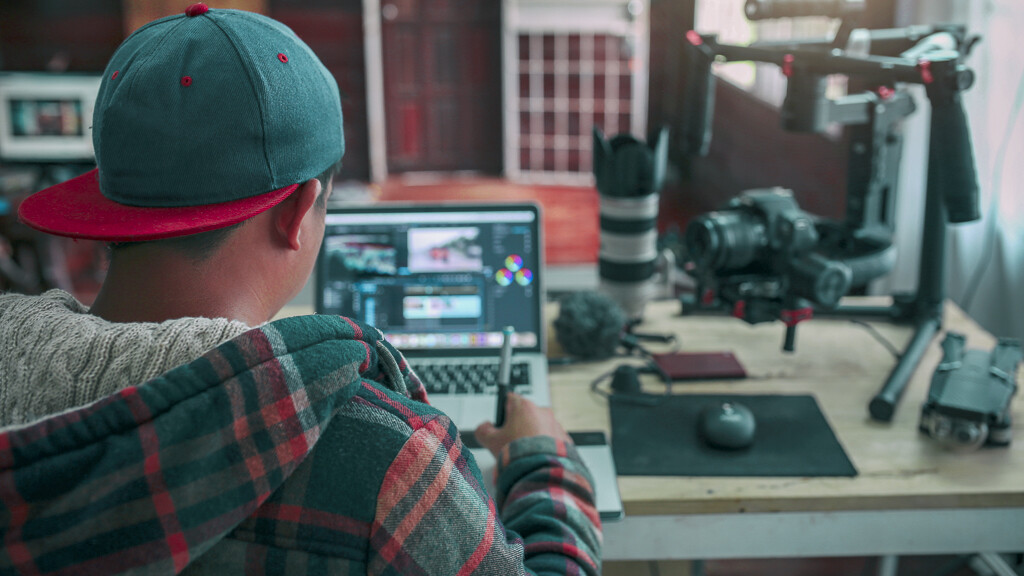How video production works?
Often times video production is not fully understood by many, consisting in more than simply pressing the record button on your camera. Here are the 5 main phases of creating a video from concept to completion:
Development
 In this first phase, we meet up to discuss the purpose, strategy, and goals for your video and how it will be used after it is finalized. Here is where we also talk about branding, target audience and budgeting, so as to plan accordingly in the pre-production phase.
In this first phase, we meet up to discuss the purpose, strategy, and goals for your video and how it will be used after it is finalized. Here is where we also talk about branding, target audience and budgeting, so as to plan accordingly in the pre-production phase.
Pre-production
 Once we’ve decided on what we want from the video, it’s time to start building a script and even storyboard all of the shots, if necessary. Doing this prior to shooting, will ensure everybody is on the same page with what their role is on the day of the shoot. Scheduling tasks is also important in this phase, as it prepares everyone on the time frames of each shot.
Once we’ve decided on what we want from the video, it’s time to start building a script and even storyboard all of the shots, if necessary. Doing this prior to shooting, will ensure everybody is on the same page with what their role is on the day of the shoot. Scheduling tasks is also important in this phase, as it prepares everyone on the time frames of each shot.
Depending on the budget, here is where we also cast actors, scout for locations, buy props and even rent additional equipment. If all goes according to plan, the production phase should run a lot smoother.
Production
 After all that planning, now it’s time for the fun part. As long as things stay within schedule, this should be a breeze, but please keep in mind that filming footage for even a short video is a lengthy process, where lights and sound need to be constantly moved with each shot. Also in almost every case, several takes are required for just one scene, having to shoot the same scene from different angles or having to retake from various mistakes that inevitably happen on the set (bloopers!). It’s not always easy to stay true to the script, as sometimes you have to improvise on the spot, if things don’t go as planned.
After all that planning, now it’s time for the fun part. As long as things stay within schedule, this should be a breeze, but please keep in mind that filming footage for even a short video is a lengthy process, where lights and sound need to be constantly moved with each shot. Also in almost every case, several takes are required for just one scene, having to shoot the same scene from different angles or having to retake from various mistakes that inevitably happen on the set (bloopers!). It’s not always easy to stay true to the script, as sometimes you have to improvise on the spot, if things don’t go as planned.
Post-production
 It’s time to put it all together! All the planning and all the shots that were recorded come down to building a story, your story. This is done by organizing all the raw footage and cutting it to match the script. Sound engineering also plays a large part in this, as having good sound design is key, when it comes to good storytelling. You know it’s top notch, when you don’t even notice it.
It’s time to put it all together! All the planning and all the shots that were recorded come down to building a story, your story. This is done by organizing all the raw footage and cutting it to match the script. Sound engineering also plays a large part in this, as having good sound design is key, when it comes to good storytelling. You know it’s top notch, when you don’t even notice it.
Another thing to keep in mind is when using music for your video. Whether it’s for personal use or a commercial video, music always needs to be licensed to the intended purpose (unfortunately that means not being able to use any popular songs, as licensing these would be very expensive).
Depending on the size of the project, post-production could last from several days to even weeks, so please let us know if you’re looking for a shorter turnaround time from the beginning of the project, as this could affect the quality of the video if left with too little time to edit.
So by this time the first draft will be ready for review, assuming there are changes that need to be made. Once the video is finalized and approved, it’s time to export the video to its final format. If you are planning to use the video on a specific platform (or platforms) be sure to communicate this with us. All platforms (YouTube, Facebook, etc) have slightly different specifications for optimal video playback.
Distribution
 Before sharing and distributing your video, you will need to host it online. Depending on your plan of distribution and your budget, there are several options like paid platforms like Wistia or Vidyard with access to advanced analytics and optimisation, hosting the video on a free channel like YouTube, but with fewer video metrics and less control or self-hosting the video on your own server.
Before sharing and distributing your video, you will need to host it online. Depending on your plan of distribution and your budget, there are several options like paid platforms like Wistia or Vidyard with access to advanced analytics and optimisation, hosting the video on a free channel like YouTube, but with fewer video metrics and less control or self-hosting the video on your own server.
Generally it’s recommended to host your video content on a paid platform where you have full control over how and where it is distributed. This will also allow you to more accurately measure the success of your video.
You’ll need to market your video where your audience will see it, and in a way that makes your core message clear. This should all tie into your larger marketing strategy for other types of content.
And that’s it — you’re done. Now the video has been spread to your target audience, it’s time to use analytics to determine the success of your entire campaign ready for the next piece of video content. Start your video production project with more knowledge .